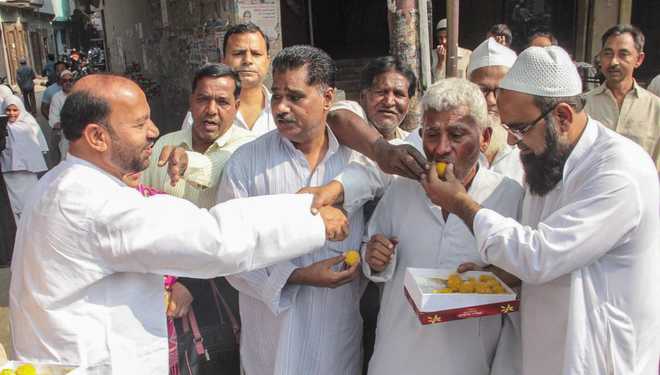
UNANSWERED QUESTION: Which institution of governance proved more anarchic in the Hashimpura episode — the political power or its law enforcement agency, the police?
Vikash Narain Rai
Former Director, National Police Academy, Hyderabad
Punishment meted out, not justice
It has taken Hashimpura trial so long to respond to the overwhelming evidence connecting guilty with the crime? A fair criticism is that punishment, and not justice, has been meted out. Should not the record number of custodial casualties (49) in a single instance of police brutality in post-Independence era and its cognisance by the highest court in early stages and unprecedented intervention of the NHRC at appeal stage, have culminated in handing over a better sense of justice to society? There is much more intrinsic at stake in this sinister episode for criminal justice system than an institutional challenge to ‘rule of law’, which every custodial killing is.
The victims were kidnapped by an armed PAC contingent from the Meerut locality and the carnage was committed at two halts at Hindan canal, one of them falling in the jurisdiction of neighbouring Ghaziabad. Vibhuti Narain Rai, then SSP of Ghaziabad, had played his role in prompt registration of the FIR as the case was transferred at electric speed the same day to CBCID Lucknow on the direction of then CM, Vir Bahadur Singh. There was much hue and cry in the police, media and political circles but little headway in investigation. The same police officer, in the early ’90s, joined as research fellow at National Police Academy (NPA), Hyderabad, and his pioneering research unearthed the fulcrum of police’s minority bias in communally charged situations. His findings were disconcerting to then NPA bosses, who refused to publish the thesis.
Who engineered it?
The Hashimpura perpetrators had acted as if they were doing a service to the cause of disturbed peace in the area. The surcharged atmosphere in the wake of Rajiv Gandhi’s Shila Pujan in Ayodhya adding to the partisanship, the police hierarchy connived and politicians in power patronised. As Rai later noted, the highest-ranking police officer put on trial was just a platoon commander in the rank of Sub-Inspector, and in no position to take a decision of this magnitude on his own. His subordinates would have refused to execute such orders but for the impression that the plan had been okayed at much higher levels.
‘Communal’ conditioning
From where do our policemen get this communally loaded conditioning? Each individual’s social background plays a part. The department ignores it while moulding them through the rigours of basic training, and the political climate in the field gives it a fillip when they start wielding power. Fresh entrants need to be relentlessly de-conditioned in order to unburden them off their ingrained socio-cultural biases.
They are not groomed in democratic values nor their accountability yields any participatory space to community they are expected to serve. A suitably crafted ‘unburden the burden’ training regimen would pave the way to initiate the process. However, it would need a decisive policy and institutional intervention to democratise the entire range of policing routine. Otherwise they are bound to continue to visualise their obligation towards law and human rights through a lens of power perspective only.
The verdict has not answered the question: which institution of governance proved more anarchic, the political power or its law enforcement agency, the police? The judiciary on its own has not come out with any statement regarding remedial strategy. There may be new players at the helm but with the same orientation. The continued coverup through silence is in line with the broader state policy of partisanship through inertia, considered politically rewarding.
The very next day after the carnage, another Muslim locality, Maliana, was burnt by goons in the presence of the police and PAC, claiming 73 lives. The trial has examined only five witnesses so far. Maliana had played the pattern of the 1984 riots and was to be repeated at a gigantic scale in the 2002 Gujarat pogrom.
Seshachalam carnage
To hammer the point of anarchy in governance, let us recall the massacre of 20 woodcutters by the Andhra police in 2015. In a brazen follow-up of political patronage to red sanders’ lobby, the hired woodcutters from Tamil Nadu were shot by the newly formed Anti-Smuggling Task Force in the Seshachalam forest. Like the five providential escapees in Hashimpura, there were three eyewitness at Seshachalam carnage as well. With the Hyderabad High Court and the NHRC stepping in and the politician in power putting up a joint front with the police, it will be another long-drawn stalemate in the quest for justice.
The common trend is to visualise the police within the professional confines of its protecting, preventing and prosecuting roles. That it has a bigger participation profile in the realm of public order — zealously controlled by political patrons — is missed out. That is where its lack of democratic sensitisation proves fatal for society. The course of Hashimpura trial would suggest that the police, unfortunately, could not be more democratic in approach than the political power governing it.



























